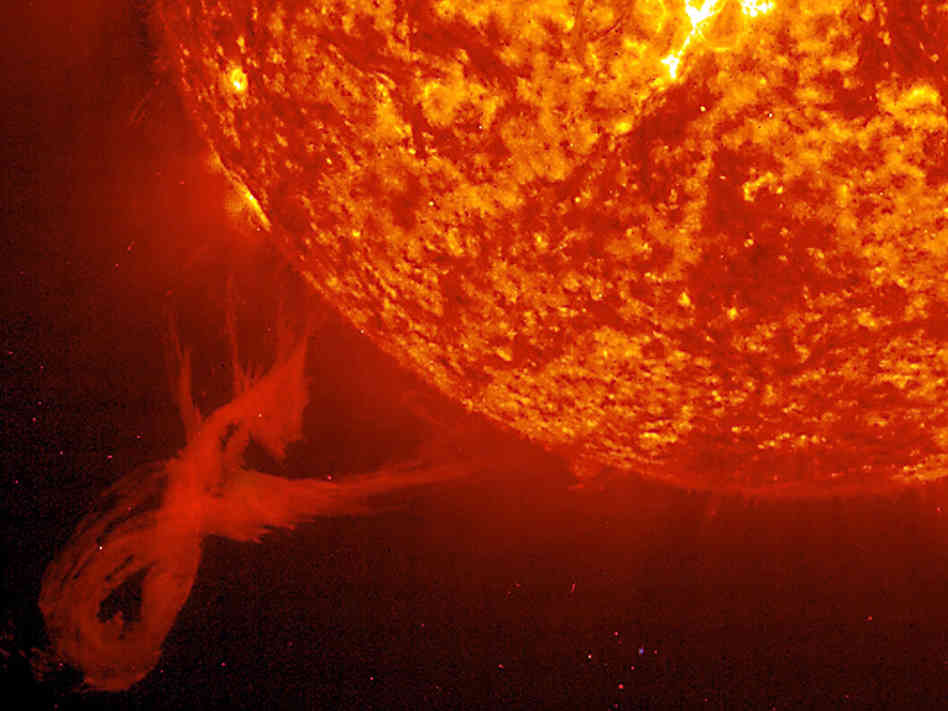Triple Alpha Reactions
At a temperature above two alpha particles (Helium nuclei) fuse to form a
nucleus. This Be nuclei is very unstable and almost decays back to two
in
seconds. However high density and temperature of the core can cause another
to strike the
(before it decays) resulting in the formation of
nucleus and emitting two gamma photons.
Since in this reaction three alpha particles get converted to one it is called the triple alpha process. The production of carbon thus requires the almost simultaneous collision of three particles. The reaction is often written as,
Once He burning has been completed at higher temperatures other reactions become possible in which heavier elements up to iron and nickel are built up.
Alpha Reactions
During Helium burning some of the carbon nuclei react with helium nuclei to form oxygen. These oxygen fuses Helium to produce Neon, even magnesium can be made. However these reactions are fairly rare because of extremely large reaction time ().
The core of an evolving star like a red giant contracts until the temperature reaches roughly two hundred million Kelvin. At this point a new energy source is available from the fusion of helium nuclei by the triple alpha process. This is a two stage reaction. In the first stage two helium four nuclei combine to form a beryllium 8 nucleus with a photon, and in the second stage a beryllium 8 nucleus combines with a helium 4 nucleus to form a carbon 12 nucleus with a photon released. Beryllium is unstable, and so the decay of beryllium before it can combine with another helium nucleus reduces the efficiency but does not quench the process. In low mass stars the energy released can rapidly heat the core and cause what’s called a helium flash. This can consume the helium fuel in only a few seconds although the effects are seen at the outer cool envelope of the star hundreds or thousands of years later and can last thousands of years. The Sun faces a helium flash roughly three hundred million years after it leaves the main sequence.






